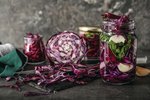Stepping from the kitchen into the garden, I cradle a cup of coffee and watch a dragonfly hover, wings in vibration, near my face. Soon, he’s skimming the lawn for bugs. There’s a quick …
This item is available in full to subscribers.
We have recently launched a new and improved website. To continue reading, you will need to either log into your subscriber account, or purchase a new subscription.
If you had an active account on our previous website, then you have an account here. Simply reset your password to regain access to your account.
If you did not have an account on our previous website, but are a current print subscriber, click here to set up your website account.
Otherwise, click here to view your options for subscribing.
* Having trouble? Call our circulation department at 360-385-2900, or email our support.
Please log in to continue |
|


Stepping from the kitchen into the garden, I cradle a cup of coffee and watch a dragonfly hover, wings in vibration, near my face. Soon, he’s skimming the lawn for bugs. There’s a quick tussle with a hummingbird, but she soon has her beak in sunflower petals. It’s summer pickling time, and I’m taking a break from making a lacto-fermented red cabbage and wild fennel kraut.
Lacto fermentation is an ancient yet simple kitchen craft that requires nothing more, at its most basic, than vegetables, salt and a container. We salt vegetables in a liquid for 3 to 14 days at a temperature between 55 to 68 F.
In this environment the lactic acid loving microorganisms proliferate. They go wild, eating the natural sugars in the vegetables and creating sourness in return. The pH will change during the process to between 4.2 to 4.5.
The resulting kraut, pickle or kimchi is both delicious and good for our gut flora. It’s a win-win and people have eaten lacto fermented foods since at least 6000 BCE.
Recently, I learned the fine distinctions between sauerkraut, brined pickles and kimchi. All are forms of lacto fermentation, but have differing brining techniques. To make sauerkraut we use the released liquids of the vegetables with salt as the brine (think cabbage juices). For brined pickles, we pour a salt brine over the cucumbers or other vegetables into a crock or jar. We make kimchi by first soaking vegetables in a salt brine for 6 to 8 hours, then adding flavorings, and finally packing everything into crocks or jars and adding reserved brine to cover the vegetables.
The delicious possibilities that got me hooked on pickling. While kraut, kimchi and brined pickles all have traditional ethnic flavors, it’s ok to come up with your own. Choose between two and five complimentary herbs and spices.
Classics are always a good place to start. Here’s a list of some herbs and spices I’ve added to lacto ferments: tarragon, basil, dill, caraway, thyme, cilantro, fennel, bay leaves, coriander, allspice, cinnamon, parsley, horseradish, ginger, onions, garlic, chives, turmeric, mustard seed, cumin, mint, hot chilies.
Lacto fermenting vegetables is rewarding, and I’d love to inspire you to try it.
Here are two books to get you started.
“Fermented Vegetables” by Kirsten and Christopher Shockey is my go-to book for recipes and techniques. They explain the art and science of kraut, brined pickles and kimchi in a friendly and understandable way.
Best of all, they have fabulous recipes for all kinds of vegetables from asparagus to zucchini.
“Wild Fermentation” by Sandor Katz is the classic and was the first book to popularize lacto fermentation when published in 2003. It’s wildly inspirational and a fun read. You’ll learn how to ferment just about everything. It was the book I worked out of for my first sauerkrauts and pickles.
Makes 1½ quarts
3 tablespoons plus 1 teaspoon sea salt
6 cups filtered water (without chlorine)
2 pounds Chinese cabbage (one large head) cored and cut into 2-inch
squares (reserve two whole outer leaves)
6 scallions cut lengthwise into 2-inch pieces
1½ tablespoons minced fresh ginger
1½ tablespoons minced fresh garlic
2 tablespoons Korean ground dried hot pepper (or other mildly hot ground chilies. I toast and grind my own dried pasilla or negro chilies, and toss the seeds into the ferment.)
Dissolve 3 tablespoons of salt in 6 cups of water. Put the cabbage into a large
bowl and pour the brine over it. Weight the cabbage down with a plate and a
heavy bowl. Let it brine at room temperature for 8 hours.
Drain the cabbage and reserve the brine. Mix the cabbage with the flavor ingredients, including the 1 teaspoon of salt. Massage these into the cabbage,
thinking good thoughts. Koreans have a word for this ‘son-mat’ which means: the taste of one’s hands. It refers to all the vibes that come through our hands while making Kimchi or cooking.
Pack the mixture into a two quart jar, cover it with some reserved brine. Lay in the whole cabbage leaves over it. Use a smaller mason jar set inside the larger jar to weight down the cabbage so the brine completely covers it. This keeps it from spoiling. “Under the brine doing fine” is the maxim to remember.
Keep a large bowl under it to catch any spills. Let the kimchi ferment in a cool spot, at no higher than 68F, for 3-6 days or the kimchi is as sour as you like.
When the flavor is right, take the jar weight out and cap it. I like to put it in smaller jars. Please leave headroom and don’t cap it too tightly. It can build up pressure. Store it in the fridge. The flavor will deepen. It’s good for about a year.
Koreans, I’ve read, eat kimchi at every meal, including breakfast. They also use it to cook with, from pancakes to stews. Besides being a probiotic, kimchi increases the availability of minerals and vitamins in vegetables.
Best of all, it’s delicious!
(Kitchen to Kitchen is sponsored by The Food Co-op. Sidonie Maroon is a chef and the culinary educator for The Food Co-op. Visit her blog at abluedotkitchen.com.)